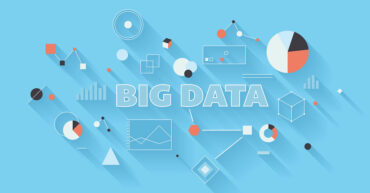Building Your First Machine Learning Model: A Step-by-Step Guide
- October 5, 2023
- Posted by: Kulbir Singh
- Category: Data Science Machine Learning

Have you ever wondered how video games learn to get harder as you get better, or how your phone knows what you’re going to type next? It’s all thanks to something super cool called Machine Learning (ML). Today, I’m going to show you how you can create your very own ML model, kind of like crafting your own mini brain that can learn! It’s like we’re going to build a robot mind step-by-step, and you don’t even need to be a wizard or a mad scientist to do it. So, let’s get started on this adventure together!
Step 1: Choose Your Adventure
First things first, we need to decide what we want our ML model to learn. Think of it like choosing the theme for your birthday party. It could be anything from recognizing different types of animals in pictures to predicting the next number in a sequence. For our adventure, let’s pick something simple but fun: teaching our model to tell the difference between apples and oranges based on their weight and color.
Step 2: Gather Your Party Supplies
Before we start building, we need to gather our supplies. In the world of ML, our supplies are data. For our apples and oranges model, we need a list of apples and oranges with their weights and colors. You can find this data online, or better yet, make your own by weighing and noting the color of some apples and oranges from your kitchen!
Step 3: Split Your Goodies
Imagine you have a bunch of candies, and you want to save some for later while you enjoy the rest now. We do the same with our data. We’ll use some of it to teach our model (this is called training data) and save some to test how well our model has learned later (this is called testing data). A good rule of thumb is to use 80% of your data for training and save 20% for testing.
Step 4: Teach Your Model to Learn
Now comes the fun part: teaching our model. This is like teaching your pet a new trick, but instead of treats, we use a computer program. There are lots of free websites and software that can help you do this without needing to be a computer programmer. We tell the program about our apples and oranges data and ask it to look for patterns. The program will use the training data to learn how to tell apples from oranges.
Step 5: Test Your Model
After our model has had its “training,” it’s time to see how much it has learned. We do this by giving it the test data (the candies we saved for later). But this time, we don’t tell it which ones are apples and which ones are oranges. We ask it to guess based on what it learned. If it guesses right, hooray! If it gets some wrong, that’s okay; it’s all part of learning.
Step 6: Celebrate and Improve
No matter how your model did, you’ve done something amazing. You’ve created a machine that learns! If it did well, celebrate! And if there’s room for improvement, that’s great too. It means you get to play detective, tweaking your model, and trying different things to make it better. Maybe you can add more data or change how you split your goodies.
Step 7: Share Your Creation
The best part of making something cool is sharing it with others. Show your friends and family what you’ve built and explain how it works. Who knows, you might inspire them to create their own ML model!
What’s Next?
Now that you’ve built your first ML model, the sky’s the limit. You can try more complex projects, like creating a model that writes its own stories or recognizes songs. There are tons of resources and communities online where you can learn more and share your projects.
Conclusion
Building your first machine learning model is like embarking on a magical quest. You start with an idea, gather your tools, and step by step, you bring something incredible to life. Along the way, you learn, adapt, and share your discoveries. Remember, every great inventor and scientist started just like you, with curiosity and a desire to explore. So keep dreaming, keep building, and who knows? One day, you might just change the world with your creations. Welcome to the exciting world of machine learning, where your imagination is the only limit!
Autonomous vehicles, also known as self-driving cars, are like smart robots that can drive themselves without a human driver.
Big Data Analytics is like using a magical magnifying glass that helps you see what’s hidden in huge piles of data. Imagine you have a gigantic puzzle made of billions of pieces
TensorFlow is like a magical toolbox that computer wizards, also known as programmers, use to teach computers how to think and learn on their own



